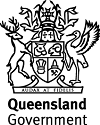Published Tuesday, 07 October, 2008 at 05:11 PM

Minister for Primary Industries and Fisheries
The Honourable Tim Mulherin
New Indigenous fishing laws take effect
Changes to Queensland’s Fisheries Act in relation to traditional Indigenous fishing practices came into effect yesterday.
Primary Industries and Fisheries Minister Tim Mulherin said: “The changes strike a balance between protecting fish stocks and breeding areas for future generations and recognising the significance of fishing to our Indigenous communities.
“The Bligh Government acknowledges the strong connection and cultural importance of fishing to Indigenous people.
“It is tied to many ceremonial and social events and it is understandable that Indigenous communities want to educate and pass on these traditions to their children.
“While the vast majority of Indigenous people do the right thing a small number of individuals have exploited the system.
“The new regulations will ensure that traditional and customary fishing is for personal, domestic and non-commercial communal purposes.
“This excludes the commercial sale of fish.
“Under the amendments there are 14 closed areas designed to prevent over-fishing where fish aggregate to feed or spawn. All fishing activity, including traditional fishing, is now prohibited in these areas.
“Indigenous fishers can continue to fish using non-commercial apparatus in accordance with their tradition in all other waters.
“My Department has already defined fish traps as traditional apparatus, and will be working closely with Indigenous communities in the coming months to identify other types of traditional fishing apparatus.
“The new rules will ensure that all fishing, whether traditional or other, is done in a sustainable way, so that future generations of Queenslanders can enjoy and benefit from the State’s natural fisheries resources.
“During the consultation period for these amendments traditional owner groups, individuals and Land Councils at State and National level were contacted.
“In conjunction with the legislative changes, the State Government will continue to negotiate an Indigenous Land Use Agreement with the Darumbal people in the Rockhampton area to seek to develop an indigenous land use agreement.
“This will ensure that the Darumbal people are actively involved in decisions about traditional fishing,” Mr Mulherin said.
Implementation includes:
·Permits to be made available to allow use of other fishing apparatus to ensure appropriate supplies for significant Indigenous ceremonial and cultural events.
· Other traditional apparatus will be described in the Fisheries Regulation 2008 after consultation with the Indigenous community about traditional apparatus
Amendments include:
·14 areas (list following) where all fishing activity is currently prohibited will be extended to include Indigenous fishing. These areas are closed to prevent over-fishing where fish spawn or gather as juveniles to protect species during vulnerable life cycle stages.
·In all other areas, fishing for personal, domestic and non-commercial communal purposes will not warrant the use of commercial apparatus.
·South Mitchell River removed as a prohibited zone and traditional apparatus allowed.
The Legislation already describes devices available for all recreational fishers:
·cast net up to 3.7 metres
·scoop net up to 2 metres
·seine net up to 16 metres
·a maximum of four crab pots, dillies or collapsible traps
·three fishing lines with no more than six hooks
·a handheld fork for taking worms
·hand pump for yabbies
·shell dredge for molluscs, and
·spear or spear gun.
The 14 areas where fishing activity is now prohibited and will be extended to apply to traditional fishing are:
·Coombabah Lake and Coombabah Creek
·Keppel Bay within 150m radius of Middle Island Underwater Observatory
·Swan Bay, North Stradbroke Island
·Hook Island within 100m radius of Observatory
·Wolf Rock (east of Double Island Point)
·Yanks Jetty at Orpheus Island – under or within 100m of jetty
·Mary River 400m downstream of the barrage
·Centenary Lakes, Cairns
·Tinana Creek 400m downstream of the barrage
·Barron River at Barron Waters (near Stony Creek and junction of Camp Oven Creek)
·Burnett River 400m downstream of the barrage
·Bizant River, Princess Charlotte Bay – including German Bar Lagoon and 2km downstream of German Bar road crossing
·Kolan River 400m downstream of the barrage
·Fitzroy River 400m downstream of the barrage
Media: Mark Symons 32396530

